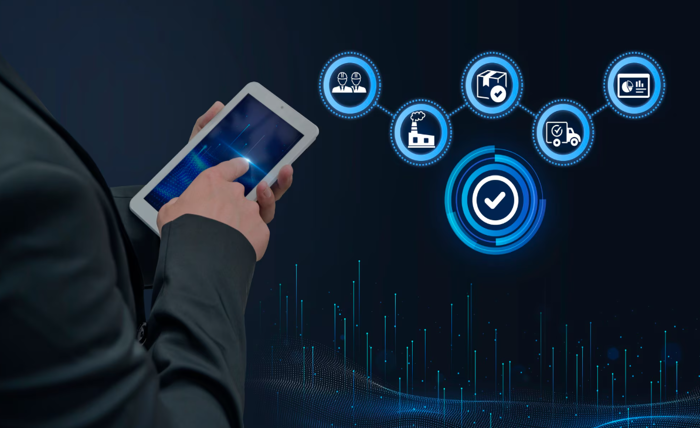
As digital systems become more complex and interconnected, managing trust, access, and identity over time has emerged as a critical challenge. Every digital certificate, signature, and identity has a lifecycle—one that must be monitored, maintained, and retired in a secure and compliant way. That’s where digital lifecycle management comes in. It provides the structure and processes needed to ensure long-term digital security and trust across your organization’s digital infrastructure.
What Is Digital Lifecycle Management?
Digital lifecycle management refers to the systematic handling of digital certificates, identities, and cryptographic keys from creation to expiration and eventual revocation. It’s about more than just issuing certificates—it involves end-to-end visibility, control, and automation to ensure these digital assets are always secure, valid, and compliant.
In today’s zero-trust environments, where systems must constantly verify and validate access requests, properly managing these lifecycles is essential for maintaining a strong security posture.
Why It Matters for Digital Security
Digital certificates play a central role in digital security. They authenticate identities, encrypt data, and secure communications. But if a certificate expires, is misconfigured, or falls into the wrong hands, the consequences can be severe—ranging from system outages to data breaches and compliance violations.
By implementing a robust lifecycle management strategy, organizations can:
- Prevent certificate-related outages
- Automate renewals and revocations
- Reduce the risk of human error
- Improve response times to incidents
- Maintain compliance with industry regulations
This proactive approach ensures that every certificate and digital identity is properly managed from issuance to retirement.
Key Phases of Certificate Lifecycle Management
An effective digital lifecycle management strategy covers every stage in the life of a certificate or digital identity:
1. Enrollment and Issuance
The lifecycle begins with requesting and issuing a certificate. This phase includes identity validation, policy enforcement, and secure key generation.
2. Deployment and Configuration
After issuance, certificates must be deployed correctly to ensure encryption, authentication, or signing functions operate as expected.
3. Monitoring and Renewal
Continuous monitoring helps detect nearing expiration dates, configuration errors, or unusual usage patterns. Automated renewal processes reduce the risk of service interruptions.
4. Revocation and Replacement
If a certificate is compromised or no longer needed, it must be revoked immediately. A proper system ensures revocations are logged, tracked, and communicated to dependent systems.
5. Audit and Compliance
Lifecycle management includes comprehensive logging and reporting, making it easier to pass audits and demonstrate regulatory compliance.
Risks of Poor Lifecycle Management
Without a dedicated lifecycle management strategy, organizations face significant security and operational risks:
- Expired certificates can disrupt websites, email systems, and APIs
- Undetected misconfigurations leave security holes open to attackers
- Manual processes introduce human error and delay critical updates
- Non-compliance can lead to legal penalties, fines, or reputational damage
Many high-profile breaches and outages have been traced back to overlooked or expired certificates—proving the importance of managing these assets continuously and effectively.
Automating for Scalability and Security
As the number of digital certificates in use grows, manual management becomes impractical and risky. Automation is the key to scalability and consistency. With the right tools, organizations can automate:
- Certificate issuance and renewal
- Policy enforcement
- Notifications and alerts
- Revocation and replacement
- Reporting and audit trails
Modern lifecycle management platforms offer these capabilities with centralized dashboards, role-based access control, and integrations with existing IT and security systems.
Ensuring Compliance and Long-Term Trust
With regulations like GDPR, eIDAS, and the NIS2 Directive, demonstrating control over your certificate infrastructure is not just good practice—it’s a legal requirement. Digital lifecycle management ensures your organization can:
- Track and log all certificate-related actions
- Respond quickly to security events
- Provide documentation for regulatory audits
- Maintain high standards of encryption and authentication
This not only enhances security but also supports digital trust—essential for customer confidence and business continuity.
Choosing the Right Solution
Implementing a digital lifecycle management solution is a strategic investment. Trusted providers like AET Europe offer platforms that are secure, scalable, and tailored to meet industry-specific needs. These solutions give organizations full visibility into their certificate environment, helping reduce complexity while increasing control and automation.
Whether you’re managing dozens or thousands of certificates, a reliable lifecycle management platform ensures nothing is missed, expired, or exposed.
Conclusion
Digital lifecycle management is more than a technical necessity—it’s a foundational element of long-term digital security. In an environment where digital certificates and identities are everywhere, managing their lifecycle effectively is critical to maintaining trust, compliance, and operational resilience.
By adopting automated, centralized, and policy-driven lifecycle management, businesses can reduce risk, improve efficiency, and stay ahead of evolving cyber threats. Don’t wait for a certificate to expire to realize the importance of lifecycle management—start building your secure digital foundation today.




